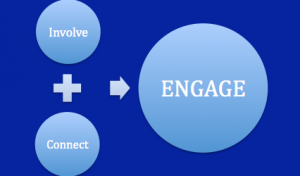10 Tips for a Compelling Speech

 Many speakers spend so much of their preparation time determining speech content and stressing about delivery, that they completely ignore the most important part of a speech – their audience. Whether you are delivering the details on a new product roll out, pitching an idea to management, motivating your team, presenting to peers or selling a client your success is directly linked to your audience engagement.
Many speakers spend so much of their preparation time determining speech content and stressing about delivery, that they completely ignore the most important part of a speech – their audience. Whether you are delivering the details on a new product roll out, pitching an idea to management, motivating your team, presenting to peers or selling a client your success is directly linked to your audience engagement.
While content and presentation skills are important, audience engagement is vital. According to Toastmasters International designing compelling presentations that engage an audience from start to finish is a key component of any successful talk and one that is often overlooked by many presenters. This is often due to the fact that many speeches are written by assistants and are typically filled with inanimate facts and/or figures causing the speaker to lecture rather than share.
Strategies to engage and involve your audience
In order to deliver an effective, compelling talk, a speech must consider ways in which to engage the audience. Applause Inc. a presentation coaching company offers several strategies even the most novice speaker can employ to ensure a successful speech:
1.) Opening is key Plan an interactive opening, think game show atmosphere – fun and engaging! Ask questions, get people involved even poking fun at what you are to deliver: “How many of you are here because you are truly interested in the number of times we’ve redesigned xyz widget? Or are you simply here because this is a required management meeting?”
2.) Use social media to create engagement prior to the meeting – ask your expected audience members to submit questions.
3.) Set the stage If you haven’t been able to use social media before the day of your speech, then ask your audience if they have questions they hope your presentation will address at the onset of your talk.
4.) Read your audience Stop throughout the presentation and ask questions – being told to wait until the end to ask questions only causes your audience to mentally wander, instead of listening they often begin thinking about their question(s) and you’ve lost them. A key to making your presentation interactive is the ability to read your audience – knowing when to continue with Q & A or when it’s appropriate to simply use questions as segues to other presentation points is important to keep the presentation on topic and flowing.
5.) Use visuals but be careful not to overdo it – too many and you could come across as someone who is unprepared, relying instead on your slides to do your ‘talking’. Be selective with your slides. Using visuals that show members of your audience are a great way to grasp attention.
6.) Use video clips in addition to PowerPoint slides to create movement and interest. Insert questions gathered from audience members prior to the presentation date. Add video clips from experts or testimonials from clients.
7.) Open up discussions but make certain to facilitate the discussion and keep it on track.
8.) Use stories or allegories to illustrate key points.
9.) Use fun quizzes either at the beginning or end or both. Keep the interest and interaction high by asking listeners to guess certain facts. Consider Including prizes for correct answers.
10.) Set up a demonstration in which audience members participate.
Remember you were most likely asked to give a presentation because you are seen as someone who is an authority on the topic – so have fun with it! Engage with the audience early and often. Pique their curiosity. Ask them questions. Use social media to create connection well before the meeting even begins. Remember, people come first, presentation comes second. When you can make your audience feel important – you have a winning presentation!
 Just as important as the pre-speech engagement is the post-speech engagement. Keep the connection alive through social media. Follow up with your audience – invite questions, and discussions. You’ll be seen not just as someone who is an expert on the subject but also as someone who is passionate about their topic and desires to be in service to others. In other words – a giver not a taker, and that’s the recipe for success.
Just as important as the pre-speech engagement is the post-speech engagement. Keep the connection alive through social media. Follow up with your audience – invite questions, and discussions. You’ll be seen not just as someone who is an expert on the subject but also as someone who is passionate about their topic and desires to be in service to others. In other words – a giver not a taker, and that’s the recipe for success.









